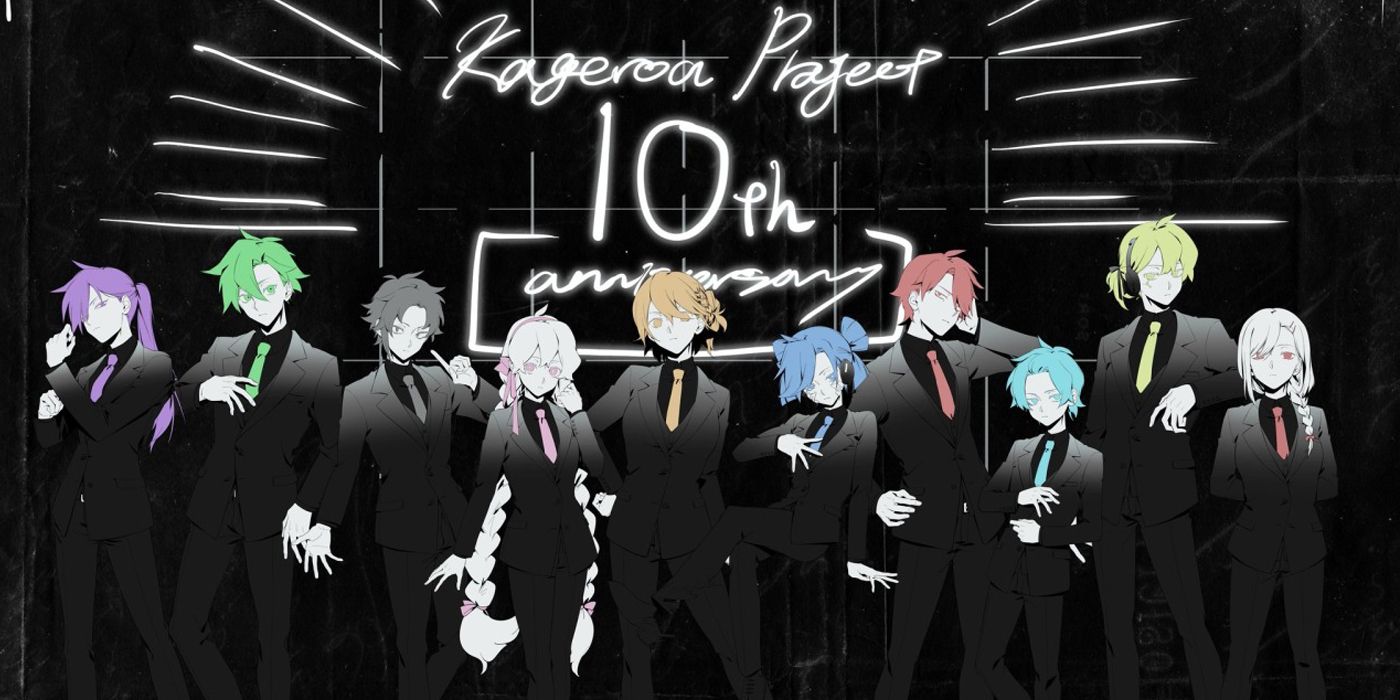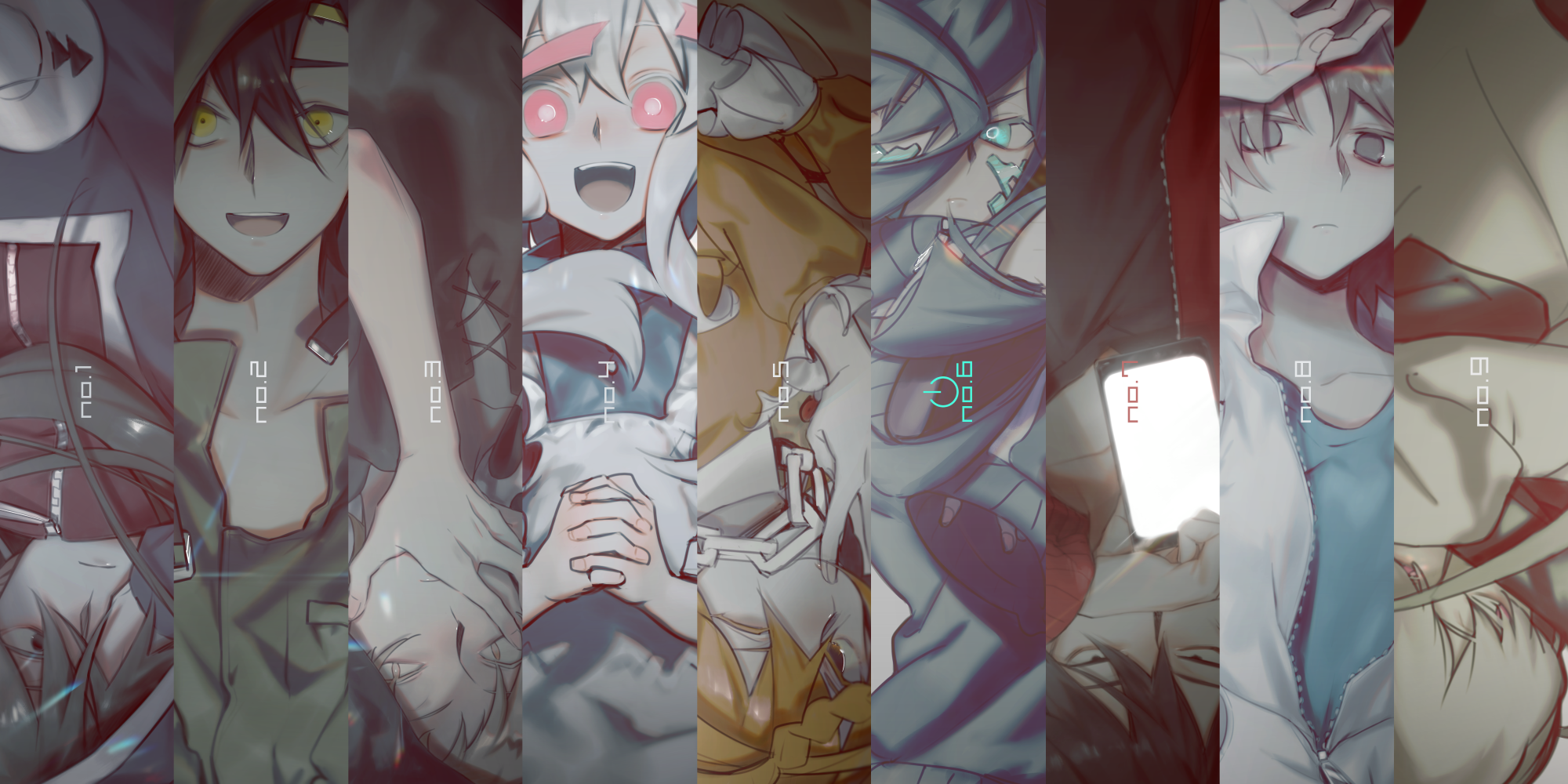Anime and manga inspired by popular Vocaloid songs are nothing new. There was the Black Rock Shooter OVA way back in 2010, last season's Heroines Run the Show, and a seemingly never-ending barrage of manga and novels. Vocaloids themselves have gotten so popular that even those who don't pay attention to anime trends at least know who Hatsune Miku is.
But there are certain songs that reach such a high level of popularity that they end up becoming something more. "Kagerou Days" is one such song whose popularity would eventually lead to the conception of Kagerou Project. Here's a look at how the popular music-based franchise got its start and has changed the Vocaloid scene.
How Kagerou Project Began
Kagerou Project started as a series of music videos produced by Jin, an indie Vocaloid producer. The first two songs in the series didn't receive much buzz and stayed mostly under the radar amid millions of other uploads on the video-sharing site, Nico Nico Douga. The first song, however, caught the eye of an artist known as Sidu. Her interest led to her getting in touch with Jin -- just like that, he now had the series' official character designer and illustrator.
The third song in the series, "Kagerou Days" was the breakthrough Jin needed to finally launch both his career and a completely new idea known as Kagerou Project. Jin had initially intended to name the franchise Mekakucity Project, but Kagerou Days proved so popular that he ultimately decided to name the project -- as well as later manga and novel adaptations -- after it. This popular song also led to the discovery of the third key member for this mixed-media project.
While the original music video was illustrated by Sidu, the version most fans may be familiar with is the fan-made one by Wannyanpoo. Her music video (seen above) became so iconic that it's popularly parodied by many fan artists to this day. In fact, Jin himself was so impressed by Wannyanpoo's rendition of his song that he commissioned her to design two more characters. She would also go on to animate five music videos and create some official illustrations for the Kagerou series.
What Is Kagerou Project About?
Kagerou Project follows a group of super-powered teenagers. After experiencing a traumatic incident in their past, they each received a special power that is activated when their eyes turn red. Together they form a group called the Mekakushi Dan, which literally translates to "Blindfold Gang" in English. They are comprised of nine members: Tsubomi Kido, Kousuke Seto, Shuya Kano, Marry Kozakura, Momo Kisaragi, Ene, Shintaro Kisarahi, Hibiya Amamiya and Konoha.
Their abilities have made them targets of an evil force who, unbeknownst to them, has trapped them in a never-ending time loop where they're destined to die horrific deaths each time. Each succeeding adaptation offers a different ending to the story, much like a branching narrative. Because of this, it's imperative for fans to read and watch all the available media in order to get a full grasp of the franchise's story.
Building Up The Kagerou Project Franchise
Several more music videos would soon follow "Kagerou Days", each one gaining the interest of more and more people. Fans started to theorize about the characters' pasts, how they connected to each other and what the main plot would be about. The music videos are so iconic, in fact, that like "Kagerou Days", many artists have created their own fan parodies of those videos and continue to do so to this day.
The franchise eventually became popular enough to warrant several adaptations. The first was a novel penned by Jin himself, with illustrations provided by Sidu. The second would be a manga adaptation illustrated by Mahiro Satou, with the story still being provided by Jin. The manga was serialized in Comic Gene, a shonen magazine that caters to female readers.
Finally, a 12-episode anime adaptation was produced by SHAFT and directed by Akiyuki Shinbo. It aired during Spring of 2014 and is currently available for streaming on Funimation. Two years later, a 23-minute film titled Kagerou Daze -in a day's- was released in theaters with Sidu acting as its director. This film is currently not available for streaming on any English-speaking platforms. A new spin-off anime titled Kagerou Daze No. 9 was supposed to release in August 2021, focusing on a completely new character. However, this has been delayed with no further news on its development.
How Kagerou Project Changed the Vocaloid Scene
Many popular music video series created by Vocaloid producers have come along before Kagerou Project, such as mothy's Evilicious Chronicles. But what sets those series apart from Kagerou Project is that they all used characters from the Vocaloid series as models to play the roles of the characters in the story. Kagerou Project, however, featured completely new and original characters.
Kagerou Project's success would see a boom among the Vocaloid producing community, as more and more music series were created that focused on original characters. Nowadays, song series that cast Vocaloids as the lead are a rarity -- and this evolution makes perfect sense. There are only so many Vocaloid characters that can be used, with most of them being female; if music producers had continued to stick to this model, their options would have been much more limited. Using original characters, however, allows for more creative freedom, especially when crafting the story.
Kagerou Project's Dedicated Fanbase
Kagerou Project is known for having an incredibly loyal fanbase that has stuck around with the franchise for more than a decade. Fan translators, fan artists, cosplayers, fan dubbers, you name it. English translations for music videos would be uploaded mere hours after the original video's arrival. Cover artists were quick to put their own unique spin to the songs -- even English-speaking artists, many of whom dubbed the songs in English.
Not only were the fans loyal, but they remain a very close-knit community in every sense of the word. Fan translations were distributed freely, and the especially dedicated fans would go out of their way to translate news reports and post them in places like fan blogs or tumblr. And after nearly 11 years since the series' inception, the fandom still comes out of its hole every year to celebrate August 15th (the date in which many major events in the series occur) with an onslaught of fanwork and memes.
Whether or not the Kagerou Project franchise will continue is up to Jin, but it's clear that the series is still very beloved and its fans are eager for more content. At the very least, the fans can be relied on to continue producing spectacular fanart and hilarious memes every time August 15 rolls around.


.jpg)
.jpg)
.jpg)
